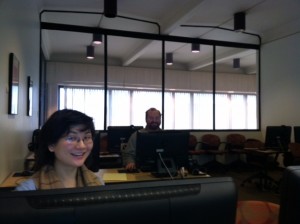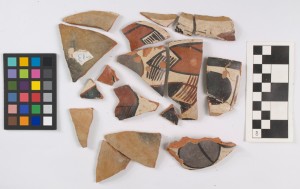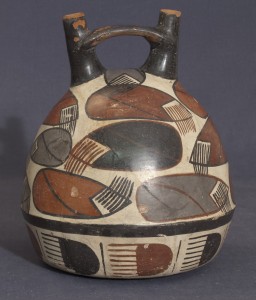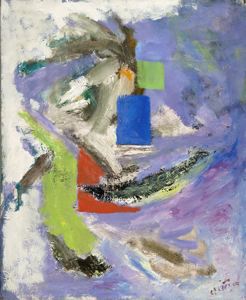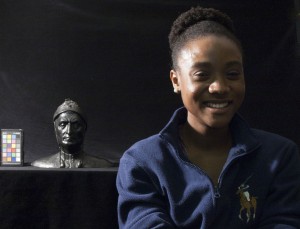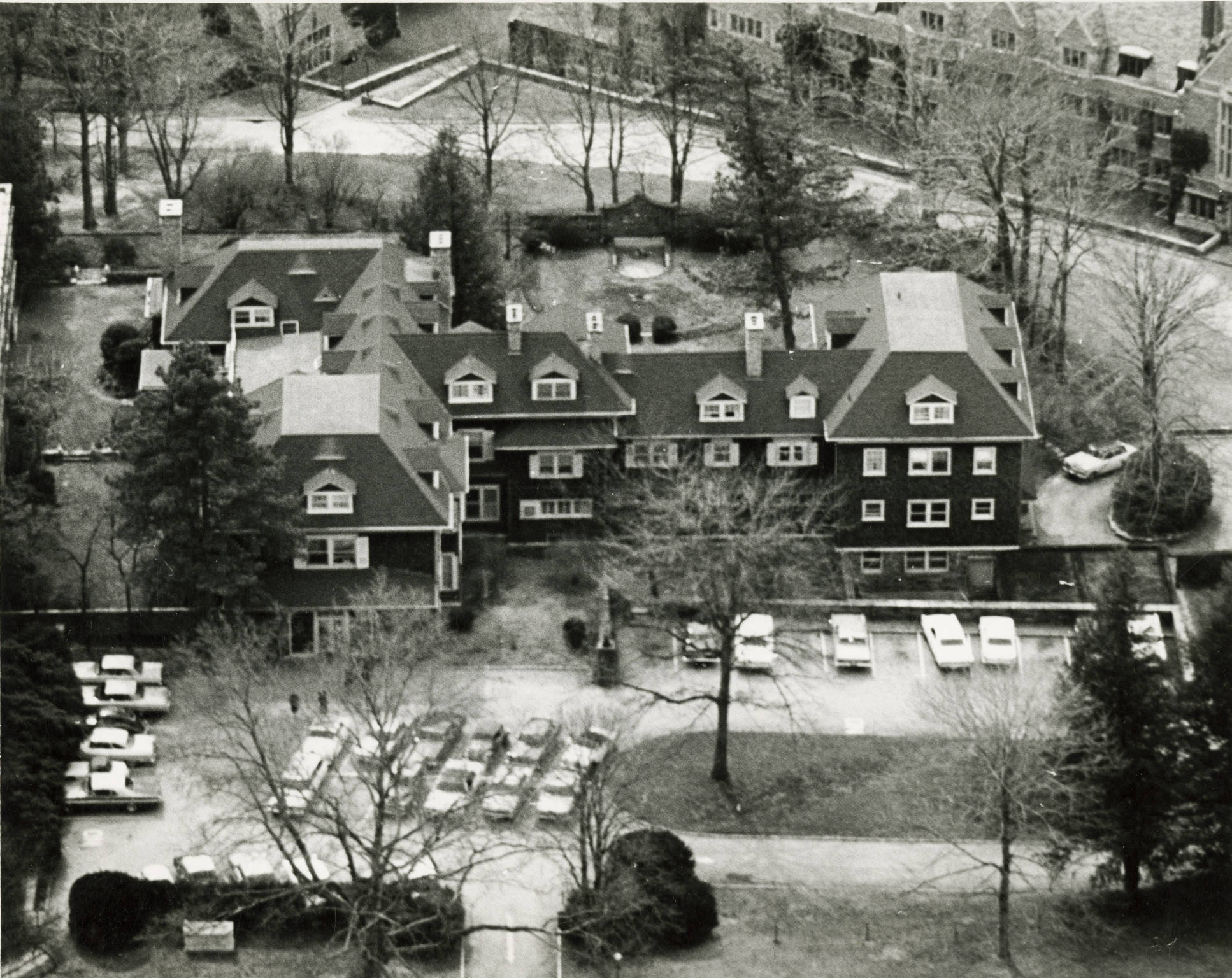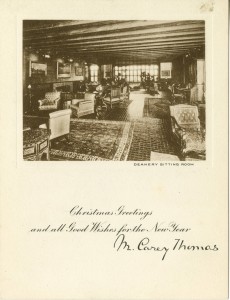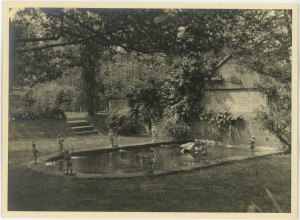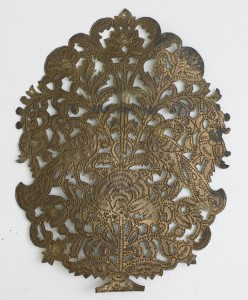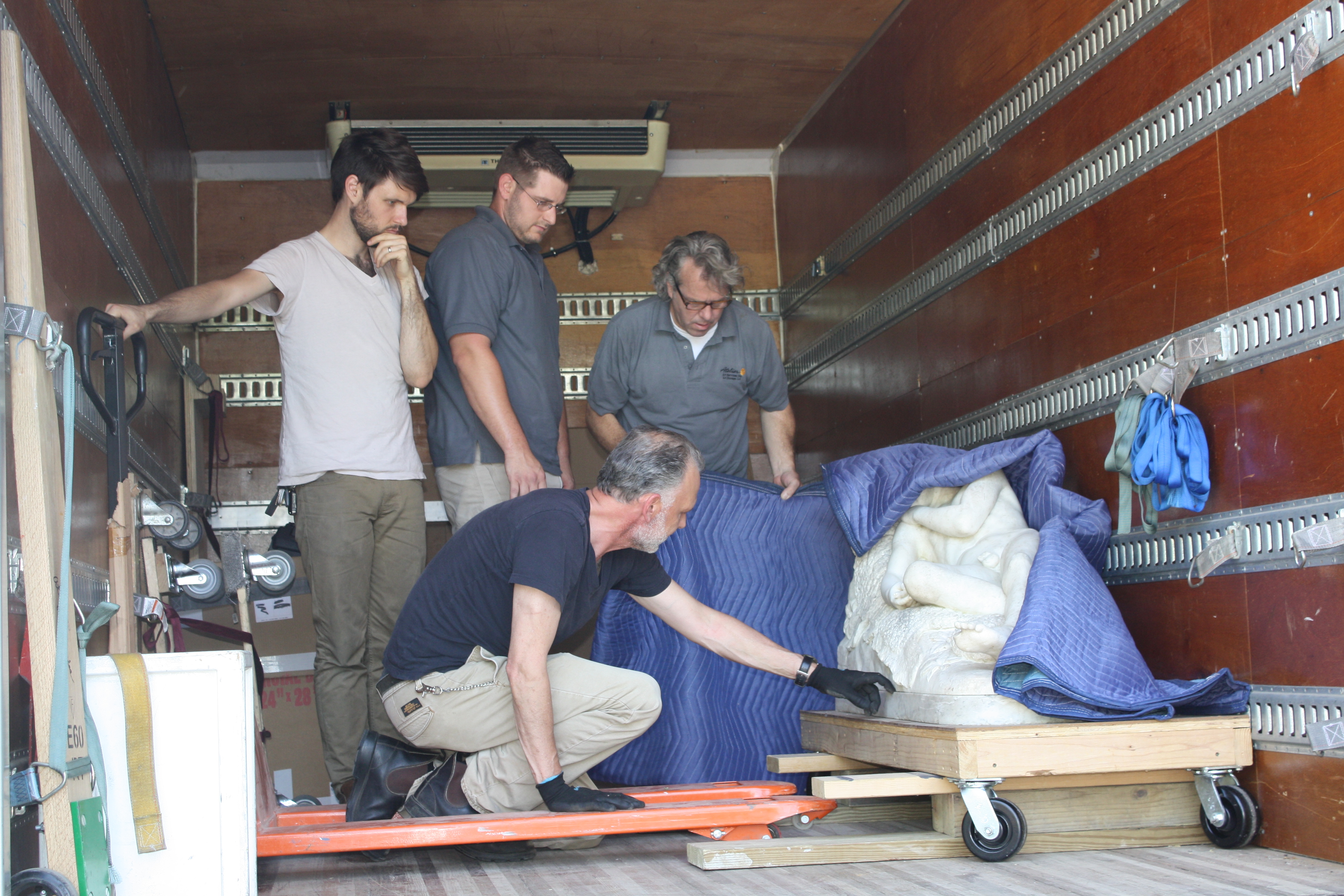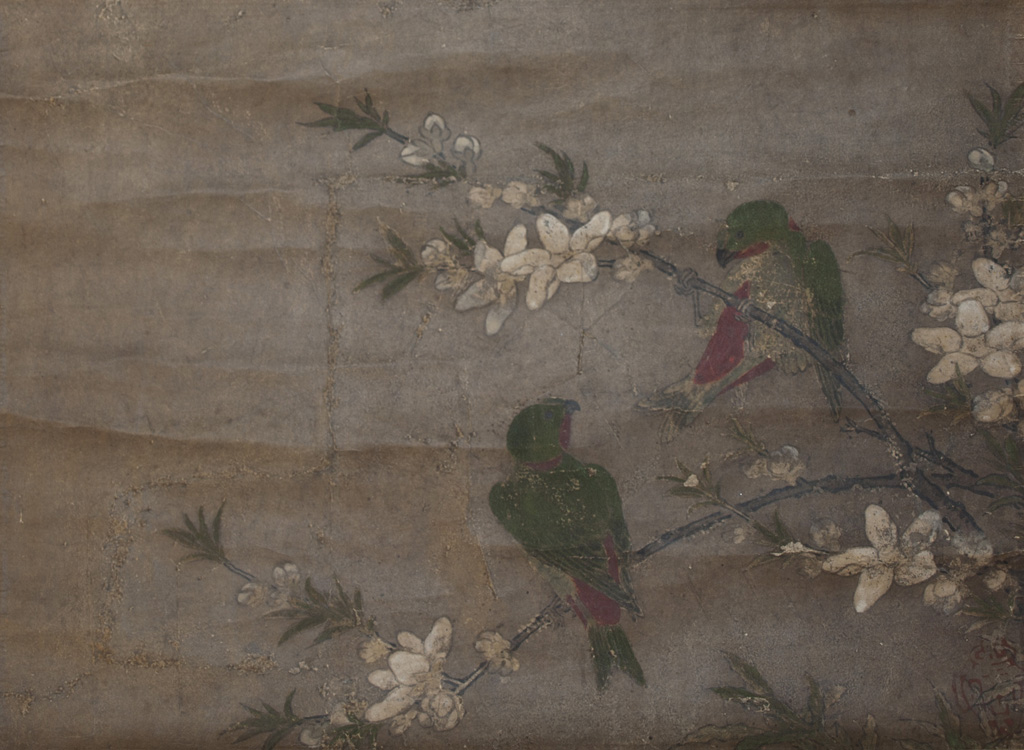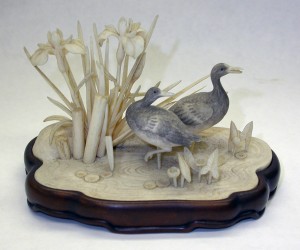
Ivory Okimono, Birds and Iris Flowers on a Wooden Stand
ca. 1950
Ivory and wood, 5 in. x 3 in. x 3 in. (12.7 cm x 7.62 cm x 7.62 cm)
Bryn Mawr College Accession Number: 2005.6.36.a-f
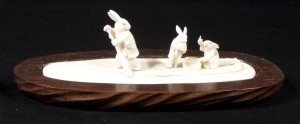
Ivory Sculpture of Three Rabbits Taking Dumplings to the Rabbit in the Moon
ca. 1950
Ivory and wood, 7 1/2 in. x 2 1/4 in. x 3 in. (19.05 cm x 5.72 cm x 7.62 cm)
Bryn Mawr College Accession Number: 2005.6.23.a-d
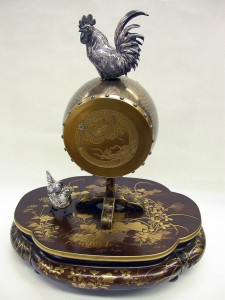
Drum and Chickens Sculpture
Wood, lacquer and metal, 11 in. x 9 in. x 14 1/2 in. (27.94 cm x 22.86 cm x 36.83 cm)
Bryn Mawr College Accession Number: 2005.6.60.a-d
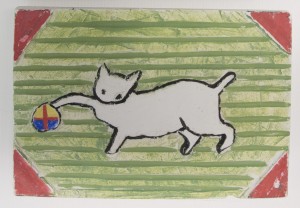
Tile
Ceramic, 5 in. x 3 1/2 in. x 1/4 in. (12.7 cm x 8.89 cm x 0.64 cm)
Bryn Mawr College Accession Number: 2005.6.41
The Elizabeth Gray Vining Collection comprises more than 60 high-quality works of decorative and fine Japanese art, which were bequeathed to Bryn Mawr College in 1999. The gift was made by Elizabeth Vining, an alumna of the College, who graduated cum laude with a Bachelor’s degree in English and in Spanish in 1923. In 1946, Mrs. Vining travelled to Japan, at the invitation of Emperor Showa, to serve as an English tutor for His Imperial Highness the Crown Prince. During her four-year tenure as tutor, Mrs. Vining developed close ties with the Imperial family, a relationship which she maintained throughout her life. Her collection reflects the nature of this long-lasting association and consists primarily of finely crafted works of art given to her as gifts by various members of the Imperial family.
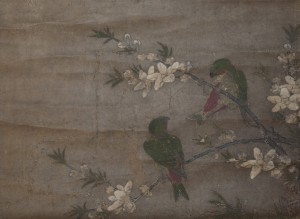
Scroll Painting of Birds and Flowers
Kano Motonobu
15th century
Hanging scroll, 44 1/2 in. x 16 15/16 in. (113 cm x 43 cm)
Bryn Mawr College Accession Number: 2005.6.26.a-c
In addition to its historical importance, the Vining Collection preserves a number of outstanding examples of 20th century Japanese fine and decorative arts. It includes lacquer bowls, boxes and writing sets, carvings of ivory and of wood, ceramic vessels, small-scale sculptures, and dolls in various materials, all of exquisite quality and craftsmanship. Additionally, the collection contains cloisonné objects produced by the workshop of Namikawa Yasuyuki and by the Ando Cloisonné Company, Ltd. The work of silversmith Miyamoto Shoko and of the painter Kawai Gyokudo is represented as well. The Vining Collection thus brings together a wide array of objects and showcases multiple facets of artistic production in early and mid-20th century Japan. A 15th century painting by the artist Kano Motonobu stands as a second focal point of the collection.
The Art and Artifact Collections at Bryn Mawr College play an important role in the education of both undergraduate and graduate students and in the dissemination of knowledge to the wider academic community as well as the general public. Bryn Mawr students are encouraged to interact with the objects in classroom settings, through independent projects, and as part of paid or volunteer work supervised by members of the Collections staff. Outside scholars are permitted access to the collections for research or publication purposes and various programs have been implemented in an effort to teach local elementary and middle school children about the ancient and modern cultures represented by the College Collections.
The Vining Collection is an integral part of the College’s Asian Art & Artifacts Collection and, as such, is in regular use. For example, objects from the Vining Collection have been featured in three recent campus exhibitions including The Way of Tea, curated by an undergraduate student, Taking Her Place, created by members of The Albert M. Greenfield Digital Center for the History of Women’s Education and Home: Departure and Destination, curated by students in the Graduate Group in Archaeology, Classics and History of Art at Bryn Mawr College.
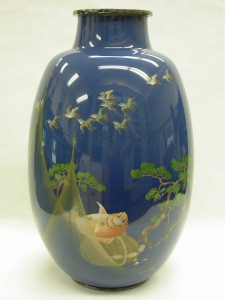
Ando Cloissone Co., Ltd.
Pair of Cloissone Vases
Cloissone Enamel, 13 in. x 25 in. (circumference) (33.02 cm x 63.5 cm)
Bryn Mawr College Accession Number: 2005.6.58.a-d
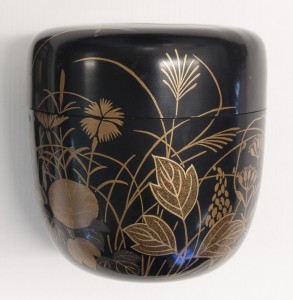
Tea Caddy
Lacquer
Bryn Mawr College Accession Number: 2005.6.2.a-c



